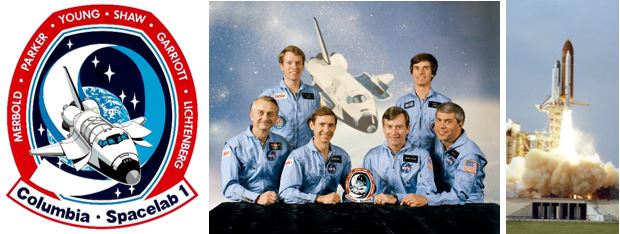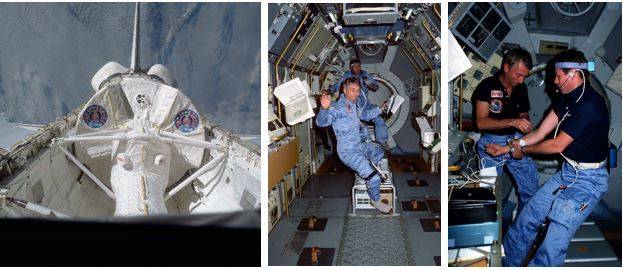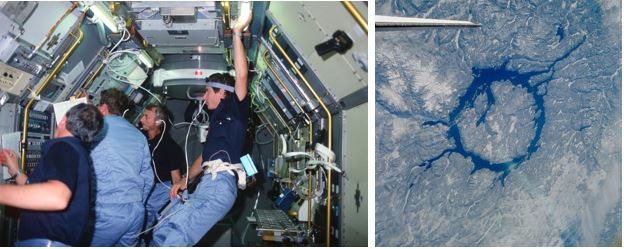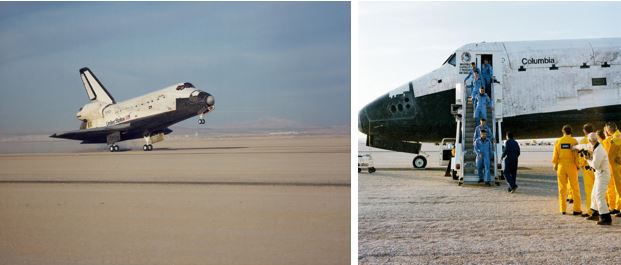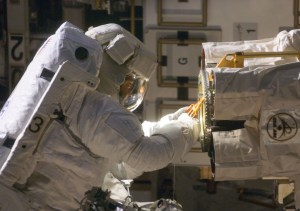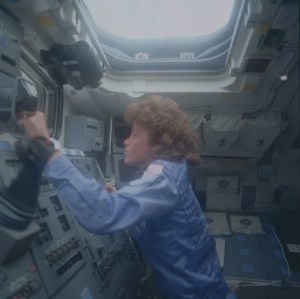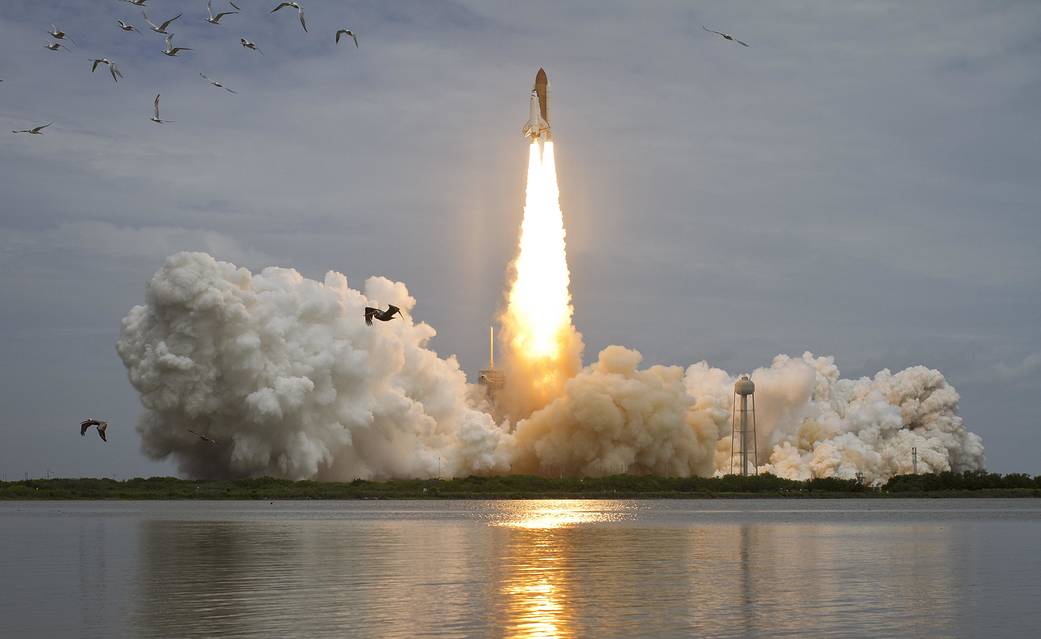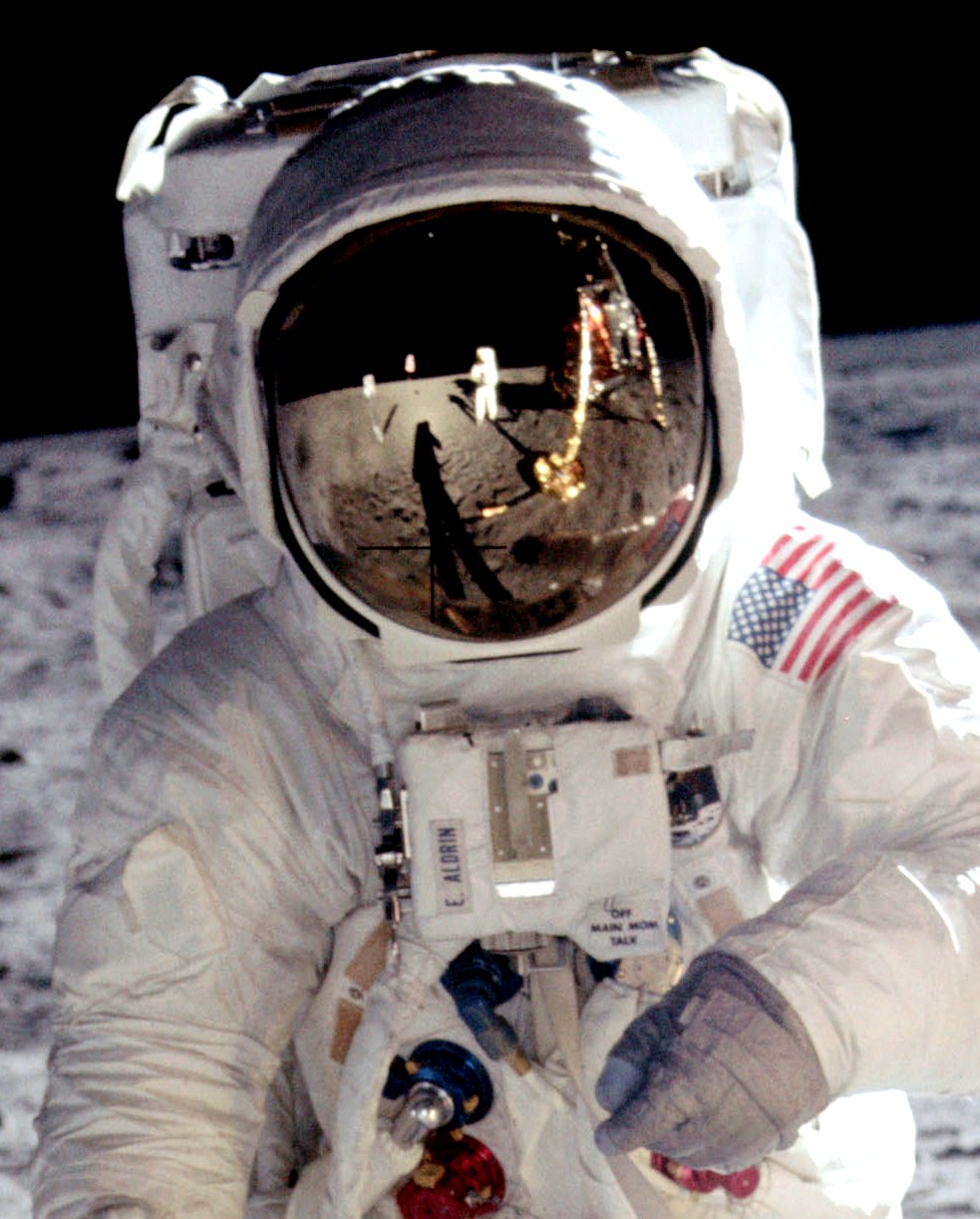The ninth flight of the Space Shuttle Program saw the return of the orbiter Columbia to space. Having flown the first five flights of the program, engineers modified Columbia to prepare it for its next flight. In the meantime, the orbiter Challenger flew its first three missions. An initial launch attempt was scrubbed due to a problem with one of the Solid Rocket Booster’s nozzle, requiring the stack to be rolled back to the Vehicle Assembly Building. Workers there destacked the vehicle to repair the nozzle, before reassembling the vehicle and rolling it back out to the launch pad. This was the first time in the Shuttle’s history that a vehicle was rolled back and destacked. On Nov. 28, 1983, Columbia thundered off Kennedy Space Center’s (KSC) Launch Complex 39A to begin the STS-9 mission. The Shuttle entered an orbit inclined 57 degrees to the equator, the highest inclination U.S. spaceflight at the time. Aboard Columbia was the first six-person crew in history, commanded by John W. Young, making a record-breaking sixth flight into space. The pilot for the mission was Brewster H. Shaw, an astronaut from the 1978 class making his first trip into space. The two mission specialists were Owen K. Garriott, a veteran of a 59-day stay aboard the Skylab space station in 1973, and Robert A. Parker, selected as an astronaut in 1967 and making his first spaceflight. Also onboard Columbia were the first two Payload Specialists to fly on the Shuttle: Byron K. Lichtenberg, a scientist from the Massachusetts Institute of Technology, and Ulf Merbold, a physicist from the Max Planck Institute in West Germany. Merbold, representing the European Space Agency (ESA), became the first non-American to fly on a U.S. space mission.
Mounted inside Columbia’s payload bay was the first Spacelab module to fly in space. In a cooperative agreement between ESA and NASA, the Europeans built the Spacelab modules. In exchange, NASA flew them aboard the Shuttle and provided flight opportunities for ESA astronauts. The 18-foot long module provided a shirt-sleeve environment in which astronauts conducted scientific experiments in a variety of disciplines. During the Spacelab 1 mission, the STS-9 crew carried out 72 experiments in atmospheric and plasma physics, astronomy, solar physics, materials sciences, technology, astrobiology, and Earth observations. For the first time in Shuttle history, the crew was split into two 12-hour shifts, allowing science to be conducted 24 hours a day. The Tracking and Data Relay Satellite, launched the previous April during the STS-6 mission, was now fully operational, enabling transmission of television and significant amounts of science data to the Payload Operations Control Center, then located in the Mission Control Center in Houston.
Upon reaching orbit, the crew opened the payload bay doors and deployed the Shuttle’s radiators. Shortly after, the crew opened the hatch, translated down the transfer tunnel and entered Spacelab for the first time, activating the module and turning on the first experiments. For the next nine days, the Red Team of Young, Parker, and Merbold, and the Blue Team of Shaw, Garriott, and Lichtenberg performed flawlessly to carry out the experiment program. Young and Shaw typically managed the Shuttle’s systems while the mission and payload specialists conducted the bulk of the research. Things were going so well that Mission Control granted them an extra day in space to achieve some additional science.
On their last day in space, the crew finished the experiments, closed up the Spacelab module and strapped themselves into their seats to prepare for their return to Earth. They fired the Shuttle’s Orbital Maneuvering System engines to begin the descent from orbit. Young piloted Columbia to a smooth landing at Edwards Air Force Base on Dec. 8, completing 166 orbits around the Earth in 10 days, 6 hours, and 47 minutes, the longest Shuttle flight at the time. Shortly before landing, a hydrazine leak caused two of the Orbiter’s three Auxiliary Power Units (APU) to catch fire. The fire burned itself out, causing damage in the APU compartment but otherwise not affecting the landing. The astronauts safely left the spacecraft without incident. NASA ferried Columbia back to KSC about a week after the landing to remove the Spacelab module from the payload bay, and then returned it to its manufacturer, Rockwell International in Palmdale, California, where workers spent the next two years refurbishing NASA’s first Orbiter before its next mission, STS-61C, in January 1986.
Read Shaw’s, Garriott’s and Parker’s recollections of the STS-9 mission in their oral histories with the JSC History Office.



























